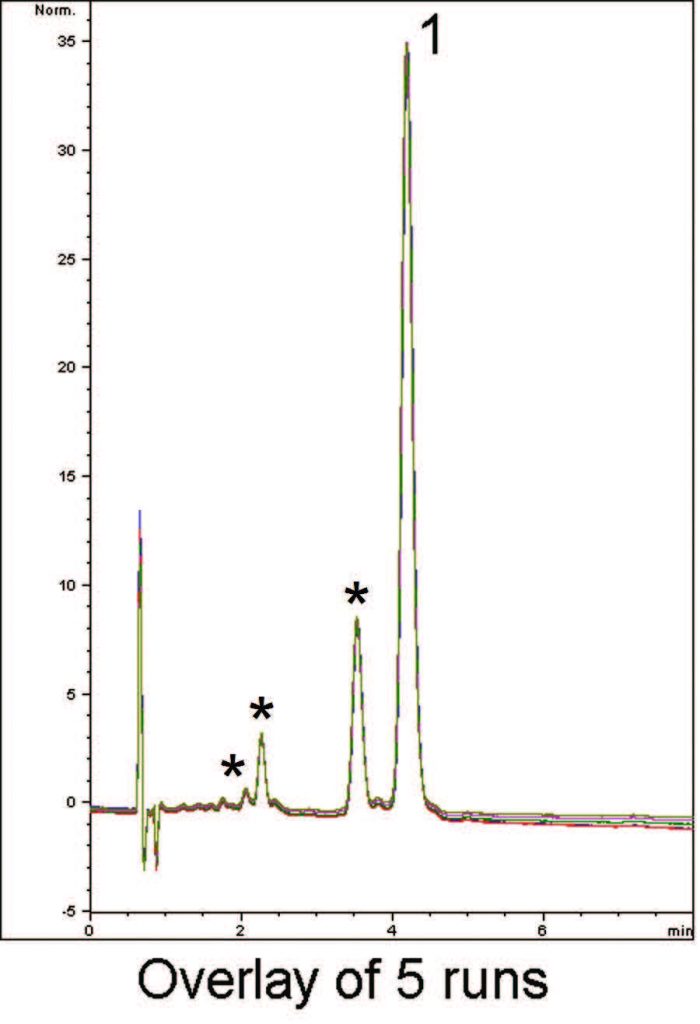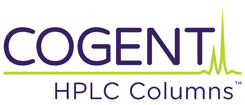The Psychoactive Component THC in Cannabis
Tetrahydrocannabinol (THC) which is derived from Cannabis, has several isomeric forms, which may account for the extra Peaks observed in the Chromatogram below. Although their identities could not be confirmed, these Peaks can be Separated from the main Peak using this Method. The compound is quite hydrophobic and therefore a relatively high organic content is used in the Mobile Phase to ensure the retention is not excessive.
Run-to-run precision is very reliable using this Method as the overlay of Five Chromatograms demonstrate.


Peaks:
1. (−)-trans-Δ9-Tetrahydrocannabinol
* Unknown Compounds (Suspected Isomeric Forms)
Method Conditions
Column: Cogent Bidentate C18™, 4μm, 100Å
Catalog No.: 40018-75P
Dimensions: 4.6 x 75mm
Mobile Phase: 30:70 DI Water with 0.1% Formic Acid (v/v) / Acetonitrile
Injection vol.: 20μL
Flow rate: 1mL / minute
Detection: UV @ 288nm
Sample Preparation: Δ9-Tetrahydrocannabinol analytical standard solution (1mg / mL in Methanol, Sigma-Aldrich cat# T4764) was diluted 1:10 with Diluent of 80:20 Acetonitrile / DI Water.
Note: THC is the psychoactive component found naturally in the Cannabis plant. Although still classified as a Schedule I controlled substance at the Federal Level, many US states now have laws allowing its use for recreational purposes.
Attachment
No 357 Tetrahydrocannabinol Analyzed with HPLC pdf 0.4 Mb Download File


